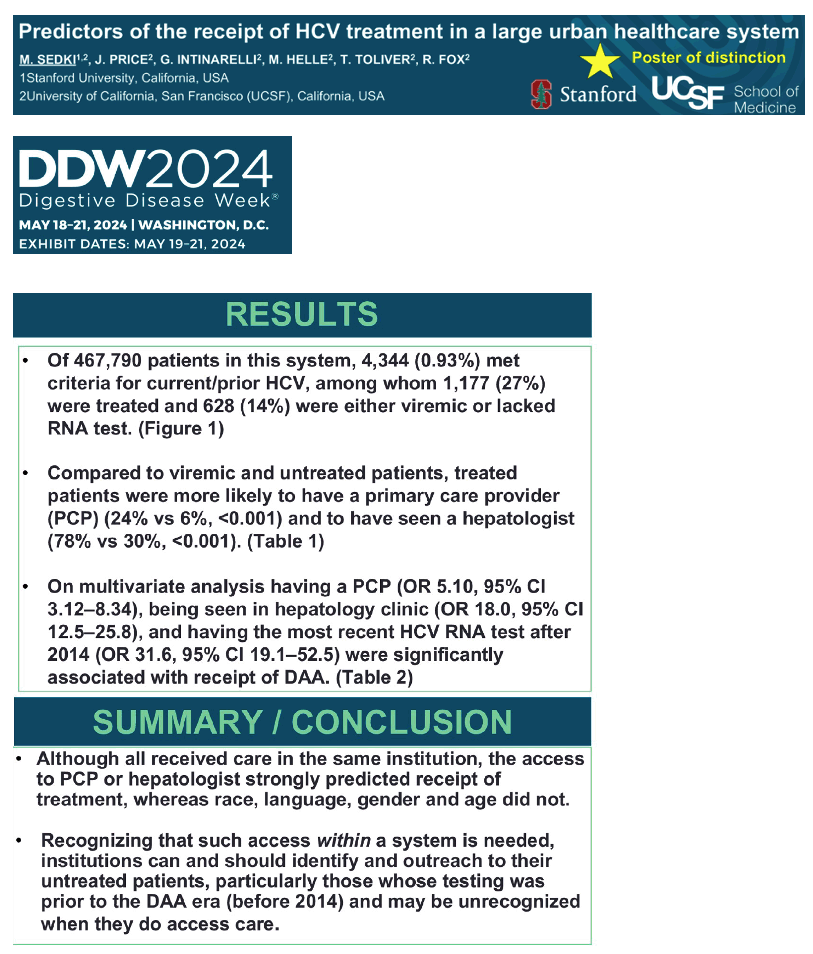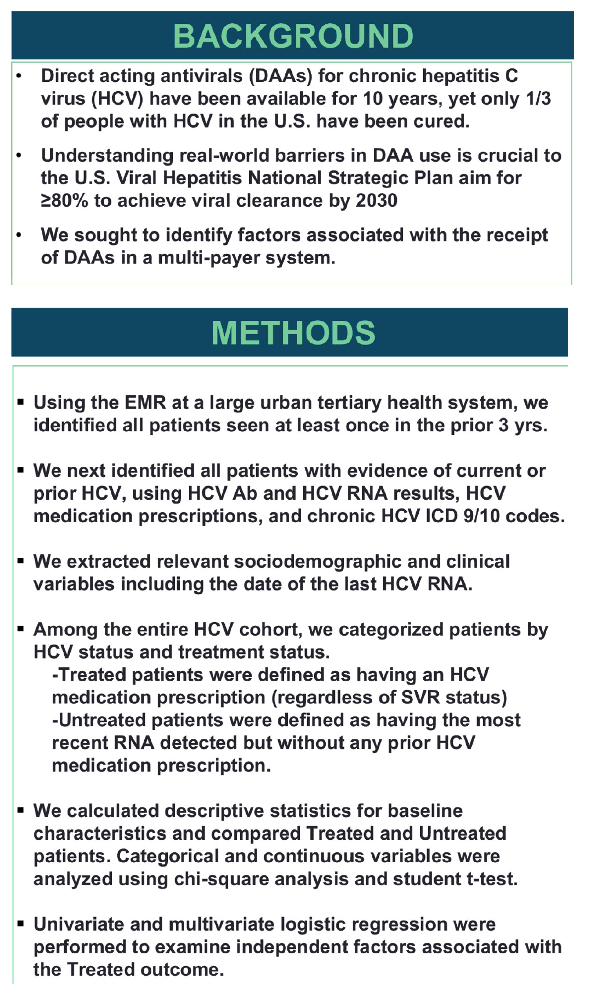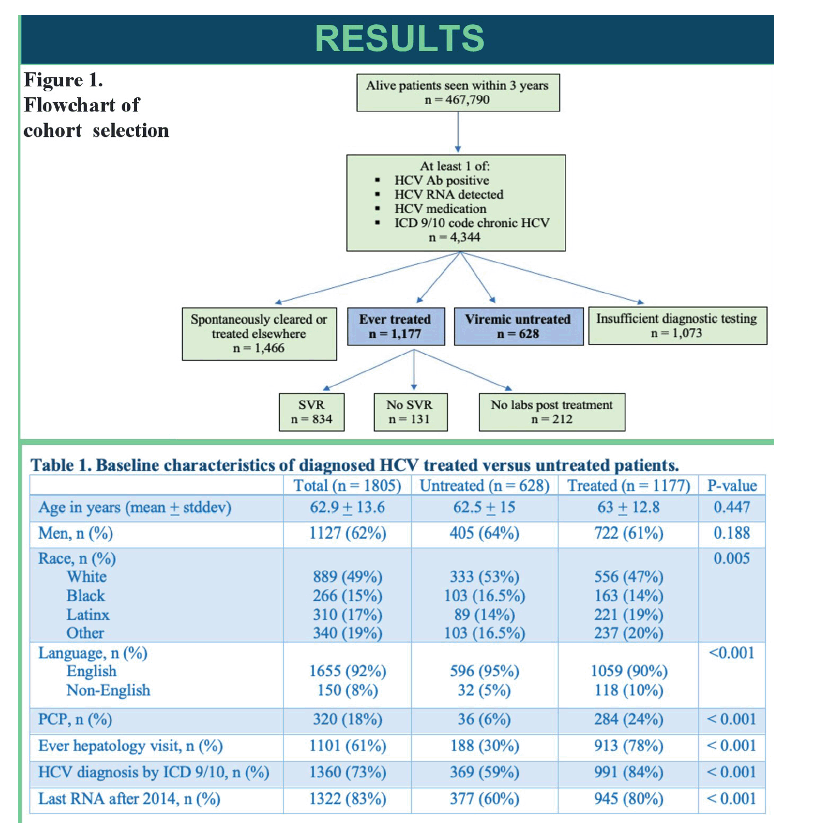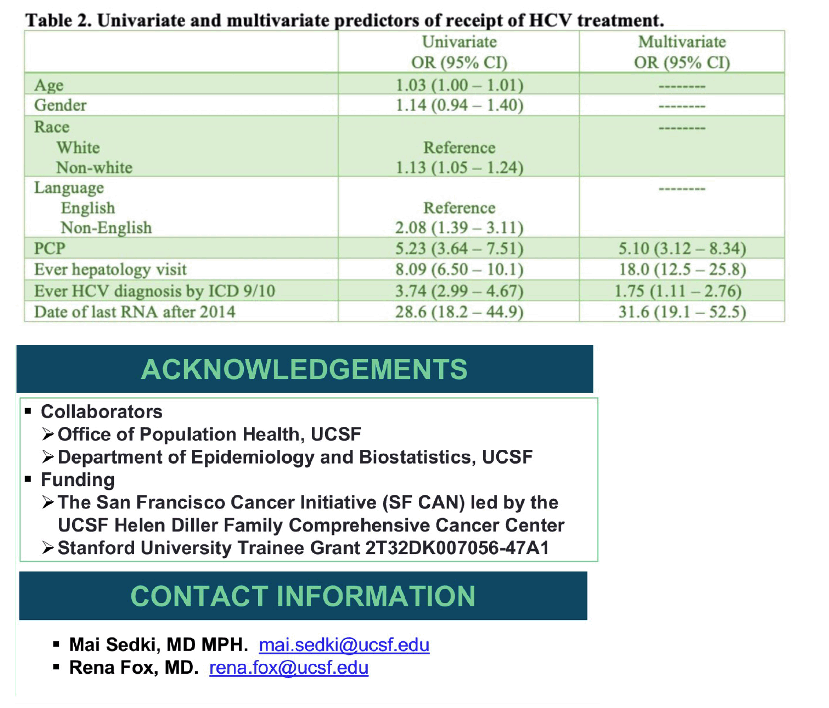 |
 |
 |
| |
PREDICTORS OF THE RECEIPT OF HEPATITIS C VIRUS (HCV) TREATMENT
AMONG CURRENT PATIENTS IN A LARGE URBAN HEALTHCARE SYSTEM
|
| |
| |
Download the PDF here
Dr. Mai Sedki
Author(s): Mai Sedki, Jennifer Price, Gina Intinarellli, Michael L. Helle, Tasha N. Toliver, Rena K. Fox


Direct acting antiviral (DAA) therapy for chronic hepatitis C virus (HCV) has been available since 2014, yet the CDC estimates that only 1/3 of people with HCV have been cured. Understanding discrepancies in use of DAA is crucial to the goal of the U.S. Viral Hepatitis National Strategic Plan for 80% to achieve viral clearance by 2030. We sought to identify factors associated with receipt of HCV treatment. Using the electronic medical record (EMR), we extracted all unique patients seen at least once between 06/2020-06/2023 at a large urban healthcare system with evidence of current or prior HCV infection, defined as meeting at least 1 of: positive HCV antibody, detectable HCV RNA, prior HCV medication, or ICD 9/10 code for HCV. Among this cohort, we identified those who were diagnosed but untreated, defined as a detectable most recent and no prior HCV medication, and those who were treated, defined as any HCV medication prescribed in the EMR. Two investigators reviewed a sample of charts to clinically validate this process. We extracted sociodemographic and clinical variables including the date of the last HCV RNA. We calculated descriptive statistics for baseline characteristics and compared treated and untreated patients. Categorical and continuous variables were analyzed using chi-square analysis and student t-test, respectively. Univariate and multivariate logistic regression were done to examine predictive factors of receipt of HCV treatment. We found 467,790 unique patients seen at least once in the past 3 years and 4,344 with evidence of current or prior HCV. We identified 1,805 with either receipt of HCV treatment (n=1,177) or with diagnosed HCV without receipt of treatment (n=628). The mean age was 62.9 years with the majority being male (62%). The cohort was diverse: 49% Caucasian, 15% Black, 17% Latinx and 19% other (Table 1). Treated patients were more likely to have a primary care provider (PCP) (24% vs 6%, <0.001) and to have seen a hepatologist (78% vs 30%, <0.001). On multivariate analysis, having a PCP (OR 5.10, 95% confidence interval [CI] 3.12-8.34), being seen in hepatology clinic (OR 18.0, 95% CI 12.5-25.8), and having the most recent HCV RNA test after 2014 (OR 31.6, 95% CI 19.1-52.5) were significantly associated with receipt of treatment (Table 2). This real-world study found that patients with HCV RNA testing after 2014 were far more likely to receive HCV treatment than patients with most recent testing before 2014. Additionally, though all had received care at this institution, access to a PCP or hepatologist strongly predicted receipt of treatment, whereas race, language, gender, and age did not. These findings suggest that healthcare institutions can and should identify and outreach to their untreated patients, particularly those whose HCV testing was prior to the DAA era and may not be recognized by current providers.


|
| |
|
 |
 |
|
|